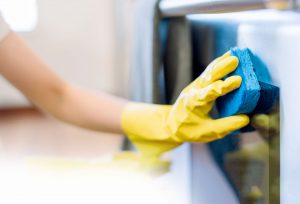Suicide & Homicide Cleanup
Crime scene cleanup is a term applied to forensic cleanup of blood, bodily fluids, and other potentially infectious materials (OPIM). It is also referred to as biohazard remediation, and forensic cleanup, because crime scenes are only a portion of the situations in which biohazard cleaning is needed. Incidents which may require this type of cleanup include accidents, suicide (or attempted suicide), homicides, and decomposition after unattended death, as well as mass trauma, industrial accidents, infectious disease contamination, animal biohazard contamination (e.g. feces or blood) or regulated waste transport, treatment, and disposal.
Crime scene cleanup includes blood spills following an assault, homicide or suicide. There are many different sub-segments, named primarily after additional collateral, contingency, or preconditions, regarding the presence of non-blood borne organics, toxic irritants (e.g.,tear gas) or disease vectors.

The crime scene cleaners’ work begins when the coroner‘s office or other official, government body releases the “scene” to the owner or other responsible parties. Only when the investigation has completely terminated on the contaminated scene may the cleaning companies begin their task.
Standard operating procedures for the crime scene cleanup field often include military-like methods for the decontamination of internal and external environments. Universal precautions recognized worldwide are the cautionary rule-of-thumb for this field of professional cleaning. For example, the personnel involved in the cleanup are expected to wear shoe covers, liquid impermeable coveralls, and protective eyewear. Wearing protective gloves and the use of specifically rated cleaning agents are also mandatory policies to ensure that the infectious agents such as hepatitis and HIV are killed. There are organizations who stress the avoidance of cleaning areas that officers cannot properly see to avoid accidental wounds such as needle puncture.

